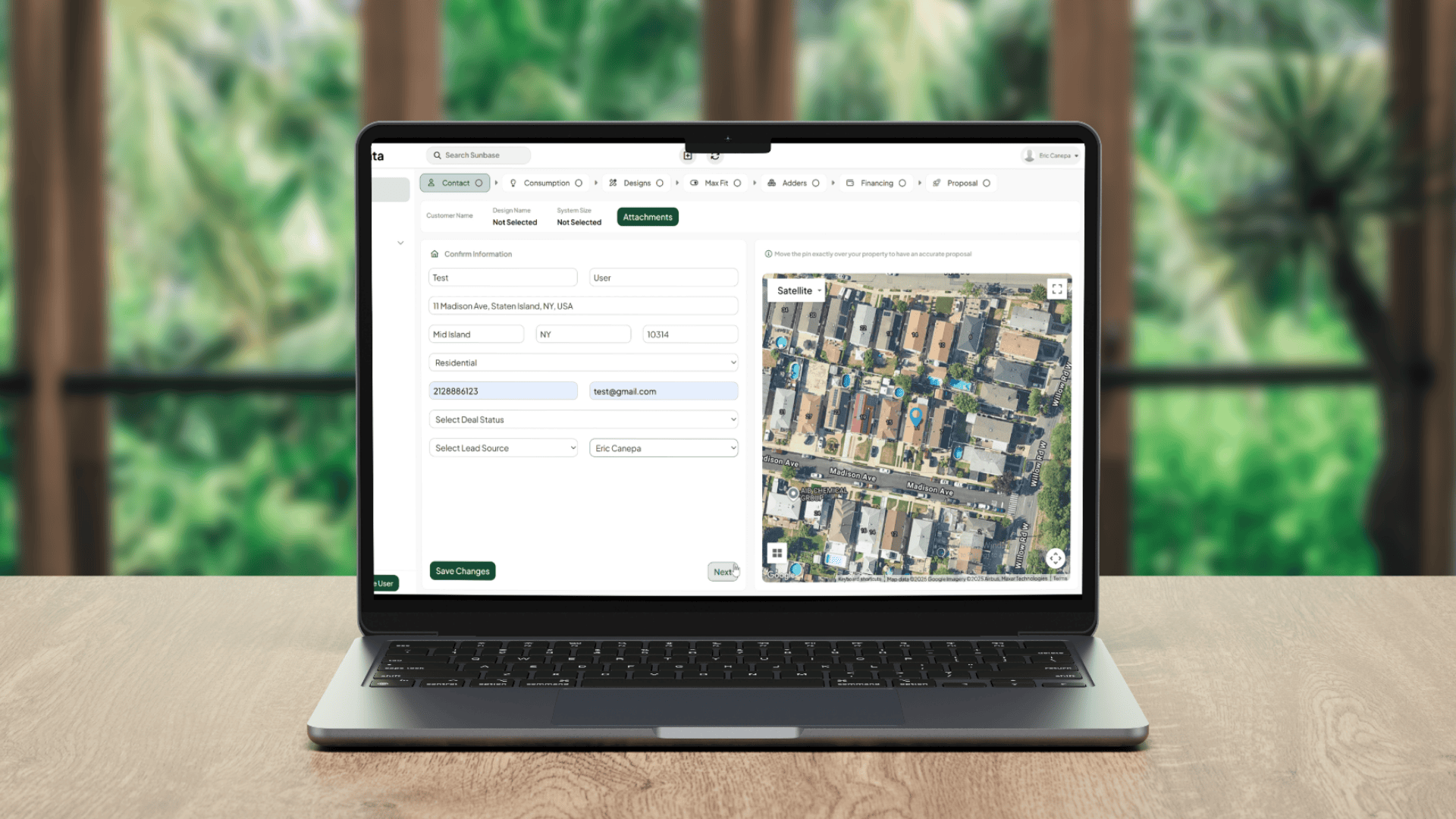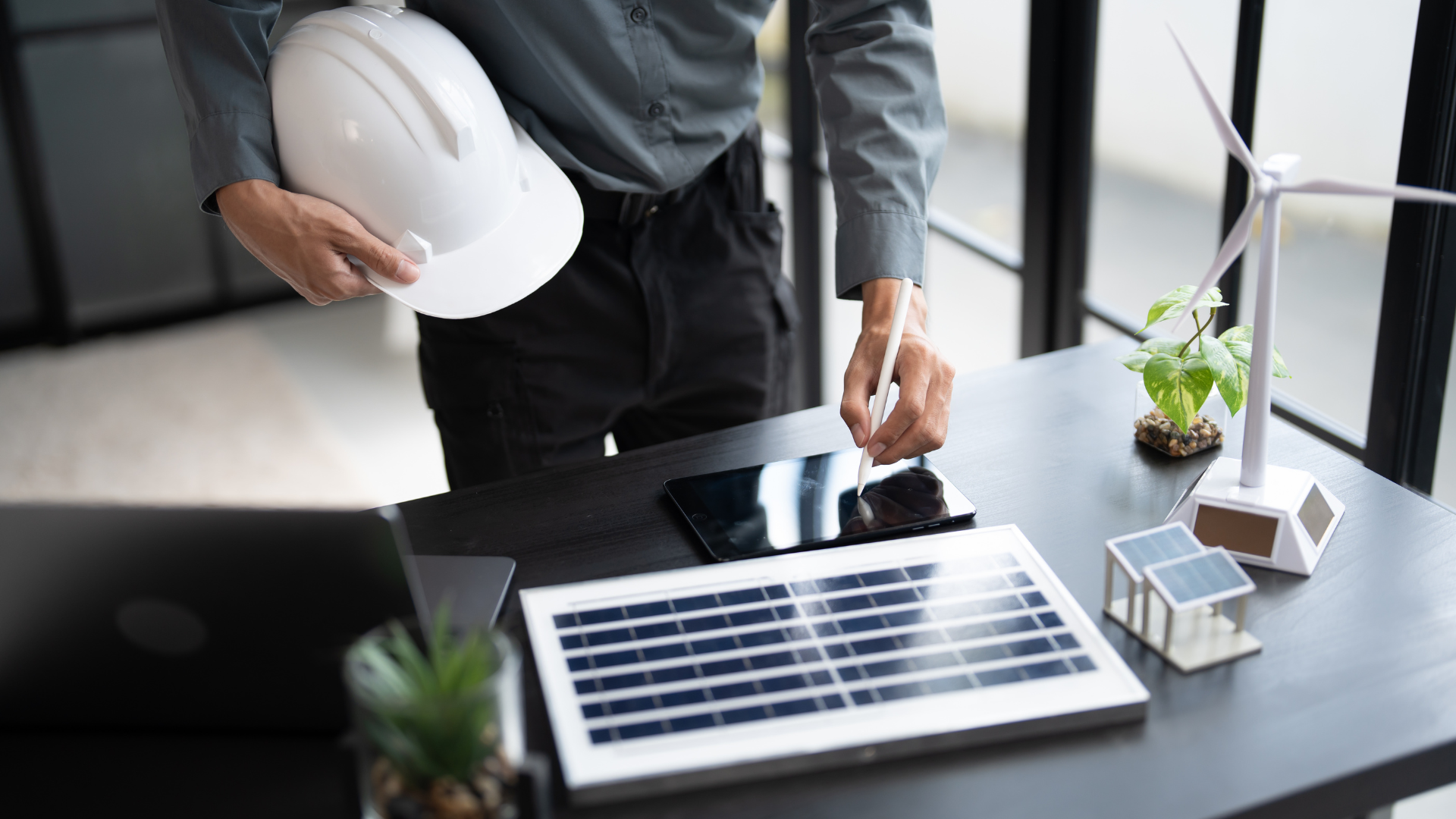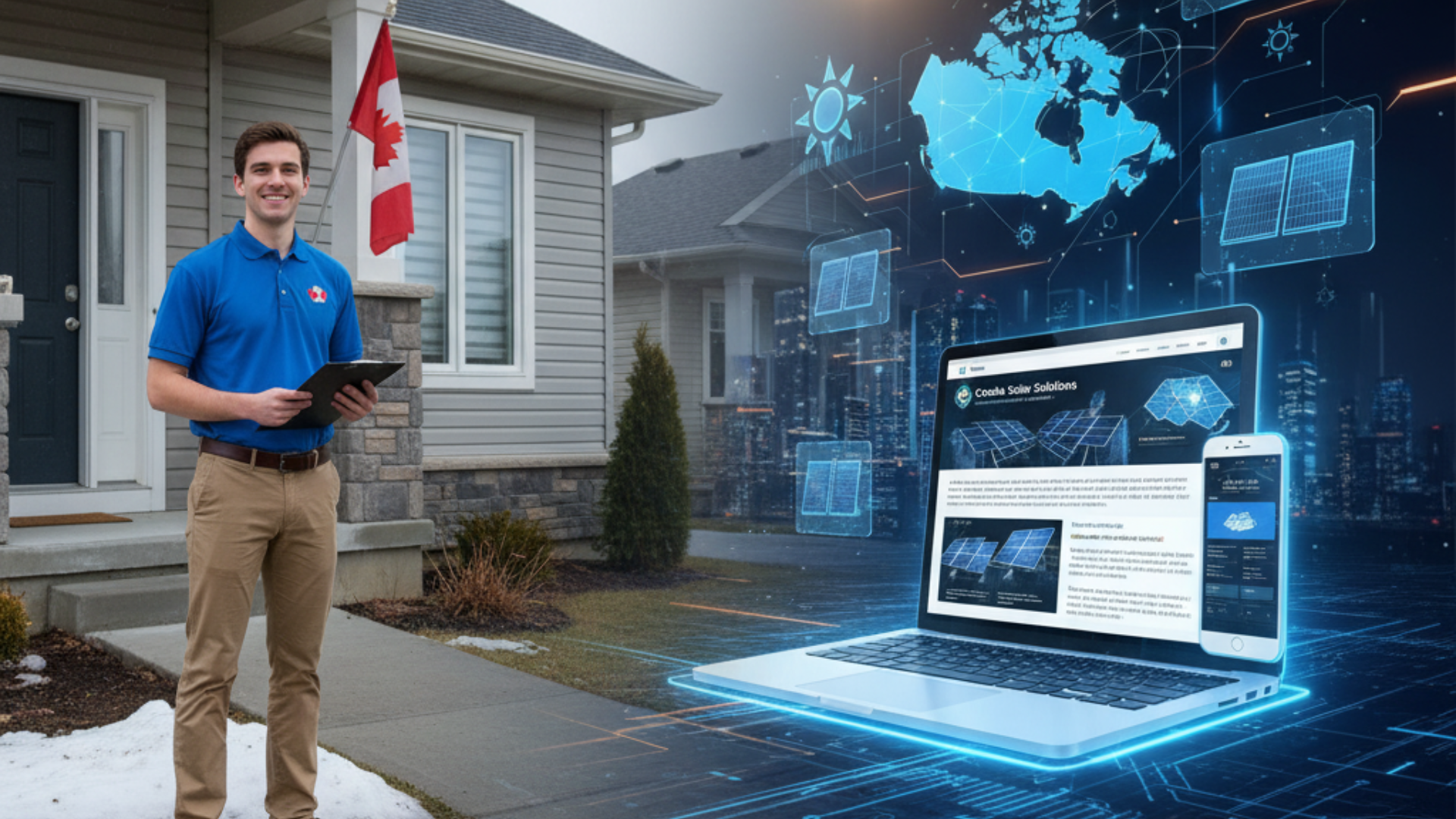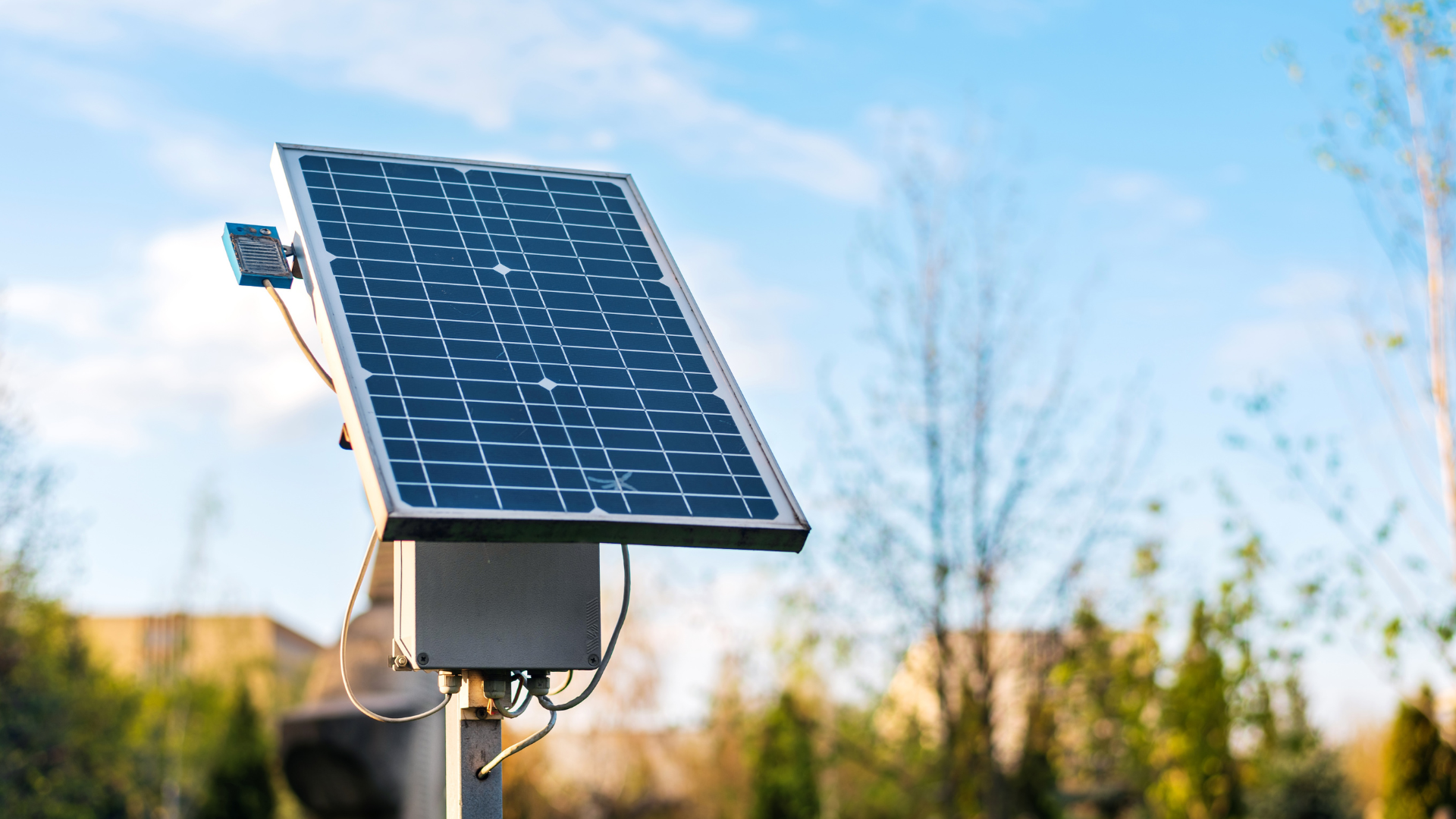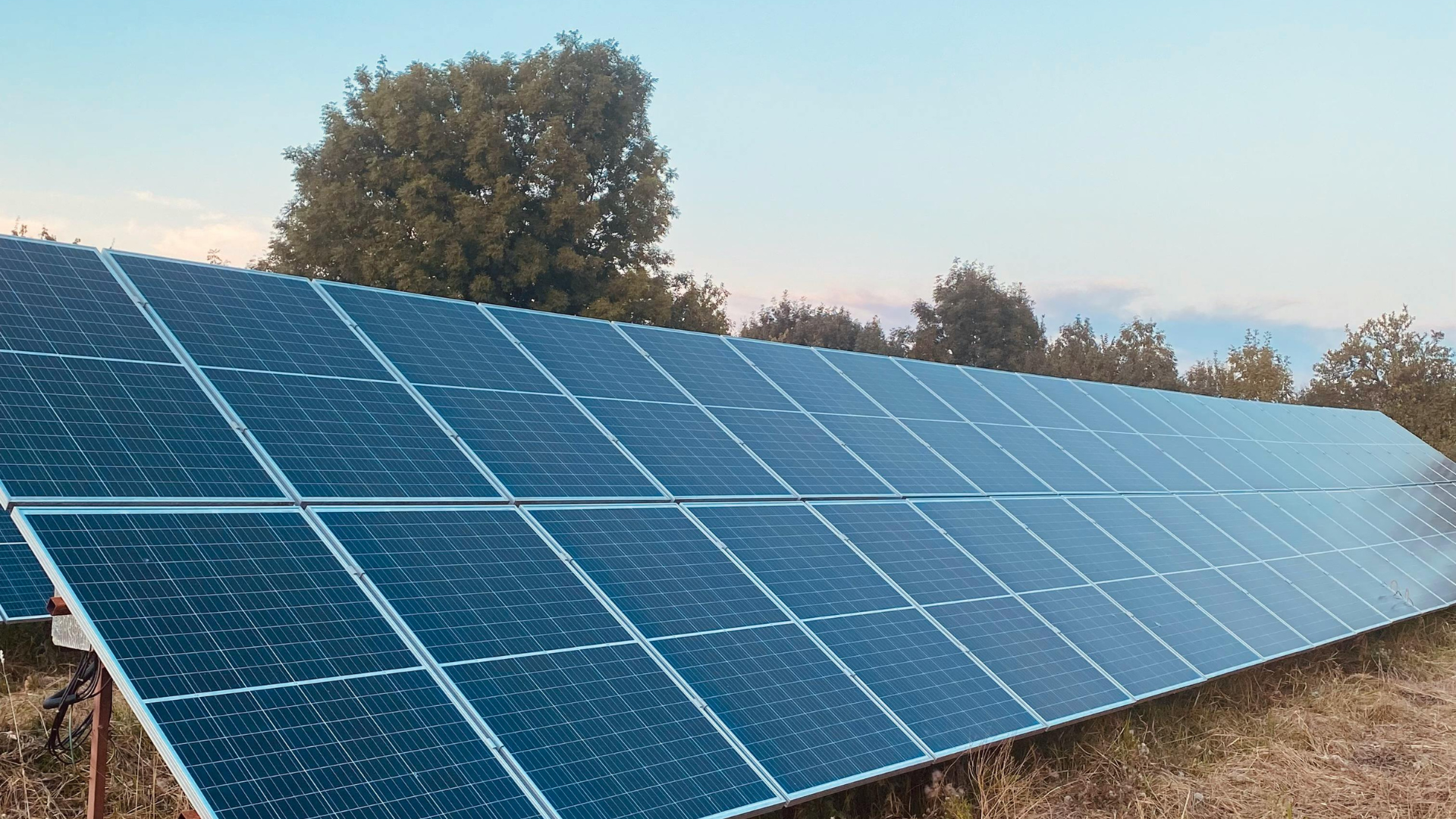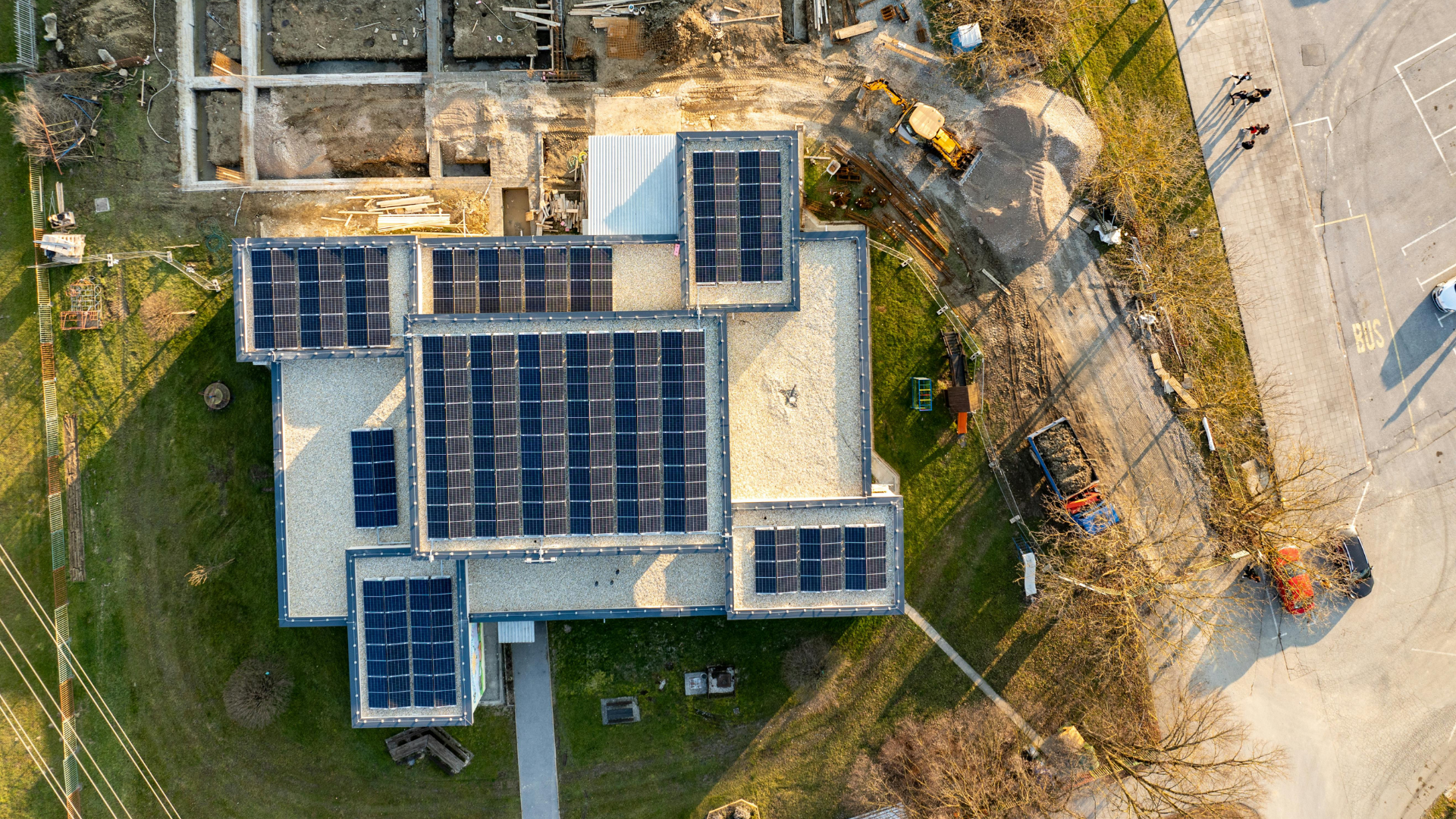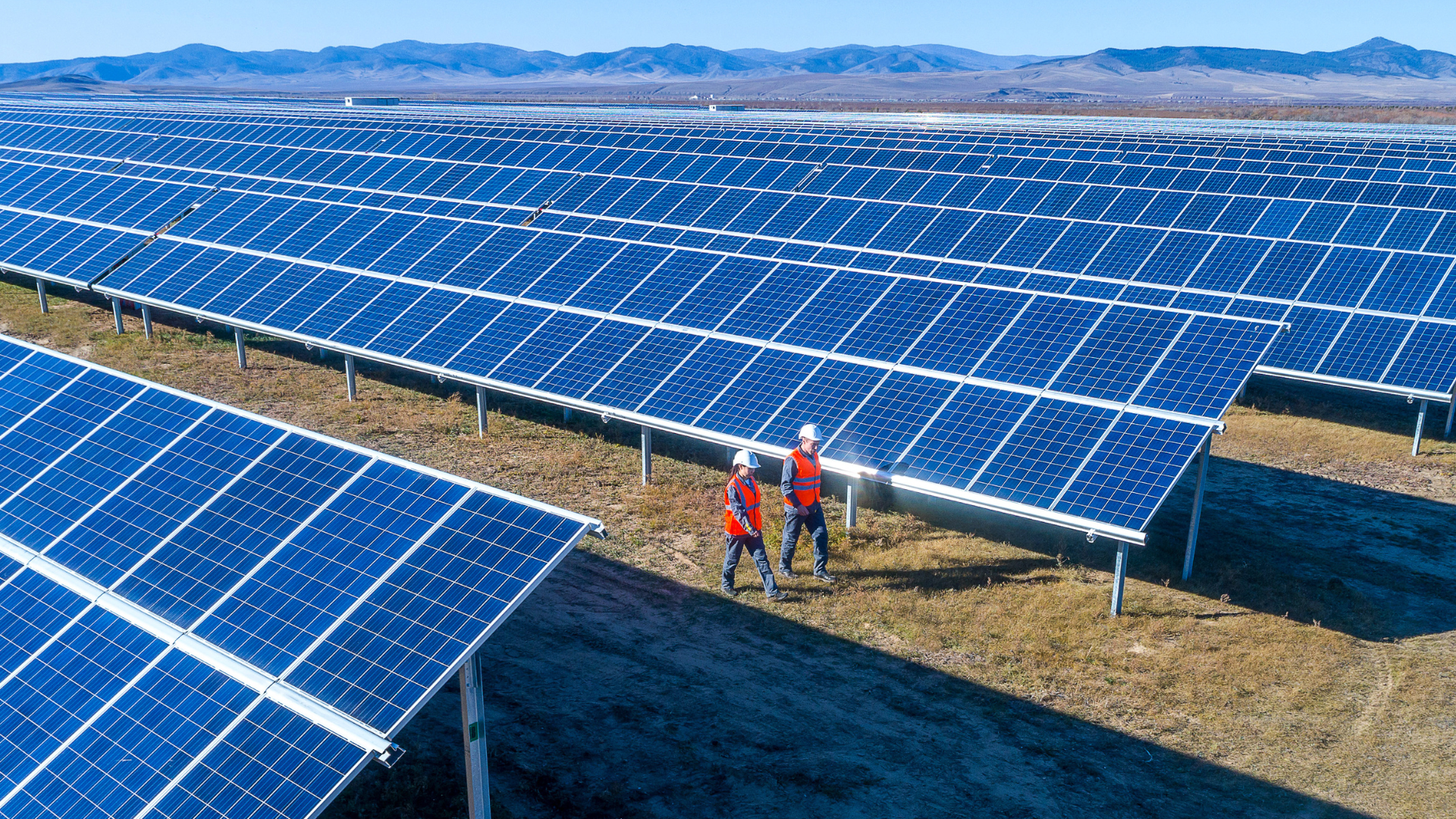November 22, 2023
Do you want to know how many panels are needed to power a house? It's a question that a lot of people have, and we're going to answer it in this article.
The short answer is you need about 10-15 panels to power your entire house but this data varies a lot and is probably different for you. How many solar panels are needed to power a house depends on many factors like the size of your house and the amount of sunlight that hits your roof. We'll go into more detail below!
Considerations Before Installing Solar Panels
Before taking the leap into solar panel installation, several crucial considerations can influence the effectiveness and efficiency of your solar power system.
Two significant factors to contemplate are the location and climate, as well as the available space for panel installation.
Location and Climate:
The geographical location of your property plays a pivotal role in determining the feasibility of solar energy generation.
Regions blessed with ample sunlight throughout the year are more conducive to harnessing solar power efficiently. Consider the following aspects:
1. Sunlight Exposure:
Evaluate the amount of sunlight your location receives. Areas with long hours of sunlight and minimal shading from trees or buildings tend to be more suitable for solar energy production.
2. Climate Conditions:
Assess the prevailing weather patterns. While solar panels work in various climates, excessive cloud cover, rain, or snow might impact their efficiency.
Nonetheless, even areas with intermittent cloud cover can generate substantial solar power.
3. Temperature Variations:
Extreme temperatures can affect panel performance. Solar panels operate more efficiently in moderate temperatures.
High temperatures can slightly reduce efficiency, while excessive cold might affect performance but usually not significantly.
Available Space for Panels:
The space available for solar panel installation on your property is another vital consideration. The amount of space determines the number and size of panels you can install, influencing the overall energy production capacity.
1. Roof Space:
Evaluate your roof's size, orientation, and angle. South-facing roofs generally receive more sunlight in the Northern Hemisphere (and vice versa in the Southern Hemisphere), making them ideal for solar panel installation.
2. Ground Installation:
If roof space is limited or not suitable, consider ground-mounted systems. Ensure the designated area receives sufficient sunlight and allows for the required tilt and orientation of panels for optimal energy capture.
3. Obstructions:
Identify potential obstructions like tall buildings, trees, or structures that might cast shadows on the solar panels during peak sunlight hours, reducing their efficiency.
What are the Factors Affecting Solar Panel Output?
How many solar panels are needed to power a house depends on many factors such as
- On the size of the house
- The climate
- The availability of sunlight
Size of the house
The logic is simple. If the house is smaller with fewer appliances to power, then fewer solar panels are needed. The bigger the house gets, the need for more appliances increases resulting in the need for more solar panels.
A small house in a sunny climate can be powered by as few as 4 solar panels, while a larger house in a less sunny climate might require up to 12 solar panels.
Climate
Climate is one of the most important factors when calculating solar panels needed for a house.
If you live in an area that is sunny most of the time, then you need fewer solar panels compared to someone who lives in an area that is cloudy most of the time.
Availability of sunlight
If you live in a place where there is not much sunlight throughout the year, then you will need more solar panels to power your house. Sunlight is what powers the solar panel system and generates electricity.
These are the factors you need to consider before you decide to install solar panels and how many. Solar panel technology is constantly improving so it may be wise to investigate how many solar panels would be ideal for your specific needs.
The number of solar panels needed to power a house depends on a variety of factors, but in general, you can expect to need between 4 and 12 solar panels for an average-sized house.
How to Measure Your Solar Panel Needs?
The question, "How much solar power is needed for a house?" often arises as homeowners seek to transition to renewable energy sources.
Let's shed light on this topic today and calculate the solar power requirements for your residential property.
Evaluating Energy Consumption
Understanding the Foundation
Before embarking on the journey to solar power, it is crucial to establish a solid foundation by comprehending your household's energy consumption.
This intricate process is akin to assembling the pieces of a puzzle, where each piece represents a facet of your energy needs.
Precision in Calculation
Determining your energy consumption involves meticulous calculation and analysis. Begin by meticulously reviewing your past utility bills, which hold a wealth of information about your historical energy usage.
This data unveils trends influenced by various factors, such as temperature fluctuations, daylight duration, and daily routines.
Guiding Lights: Calculating Solar Panel Requirements
Navigating the Solar Journey
Armed with insights into your energy consumption, you can now embark on the journey of determining the solar power system required to meet your household's needs.
Two guiding lights on this path are the number of solar panels and the concept of peak sunlight hours.
Quantitative Analysis
The number of solar panels you need is a direct reflection of your energy usage. As the sun illuminates your solar panel array, its capacity must be aligned with the demands of your household.
In simple terms, the more energy you consume, the larger your solar array must be to accommodate this consumption.
Sunlight's Essence
Peak sunlight hours play a pivotal role in energy generation. These are the hours when your solar panels are most productive, directly impacting the efficiency of your solar energy system.
Regions blessed with ample sunlight enjoy greater energy yields, making solar installation a more attractive proposition.
Sunbase Solar Design Software
Sunbase Solar Design Software is the complete solution for effortless solar system design and sales proposals.
With just an address and an electric bill, you can track how much energy is needed for your home and create accurate commercial projects in minutes, saving time and increasing your sales with winning proposals.
It offers powerful tools for remote site analysis, seamless integration, and precise energy production estimates.
Sunbase Solar Design Software simplifies the calculation of solar panel needs by analyzing energy consumption, simulating energy production, and optimizing panel layout.
It helps users select the right panels and sizes, ensuring the solar system meets the project's energy requirements accurately. This streamlined process is vital for the successful implementation of solar projects.
How many solar panels do you need for common appliances?
The number of solar panel wattage you need to power common appliances will depend on the wattage of each appliance and your average daily usage. Let's explain it to:
Determine the wattage of your appliances
The wattage of an appliance is a measure of how much electricity it uses. You can find the wattage of an appliance by looking at its energy label or user manual.
Estimate your daily usage of each appliance
How many hours per day do you typically use each appliance? Multiply the wattage of the appliance by the number of hours you use it per day to get the daily kWh usage.
Calculate your total daily kWh usage
Add up the daily kWh usage for all of the appliances you want to power with solar panels.
Divide your total daily kWh usage by the efficiency of the solar panels
Solar panel efficiency is a measure of how much sunlight a panel can convert into electricity. The higher the efficiency, the fewer panels you will need.
Solar panel efficiency is typically measured in watts per peak sun hour (W/pSH). A panel with a W/pSH rating of 300 means that it can produce 300 watts of electricity for every hour of peak sunlight.
Round up to the nearest whole number
The number you get from step 4 is the approximate number of solar panels you need. Round up to the nearest whole number to ensure that you have enough power.
Example:
Here is an example of how to calculate the number of solar panels you need for common appliances:
Let's say you have the following appliances and their estimated daily usage:
- Refrigerator: 300 watts, 10 kilowatt hours per day = 3000 watts per day
- Dishwasher: 1200 watts, 2 kilowatt hours per day = 2400 watts per day
- Washing machine: 1000 watts, 1 kilowatt hour per day = 1000 watts per day
Your total daily kWh usage is 3000 + 2400 + 1000 = 6400 watts.
Let's say you are using solar panels with an efficiency of 25%. Dividing your total daily kWh usage by the efficiency of your solar panels gives you 6400 / 0.25 = 25,600.
Rounding up to the nearest whole number, you would need 26 solar panels to power your appliances.
It is important to note that this is just an estimate, and the actual number of solar panels you need may vary depending on your specific circumstances. It is always a good idea to consult with a qualified solar installer to get an accurate estimate.
Maximizing Your Solar Panel Efficiency
To optimize the efficiency and effectiveness of your solar panel system, several key considerations can significantly impact its performance.
Maximizing solar panel efficiency involves a combination of factors that can enhance energy production and overall effectiveness:
Panel Placement and Orientation:
- Orientation: Properly orienting solar panels towards the sun is crucial. In the Northern Hemisphere, panels facing south typically capture the most sunlight, while in the Southern Hemisphere, a north-facing orientation is ideal.
- Tilt Angle: Adjusting the tilt angle of the panels according to your latitude can improve energy capture. This angle ensures maximum exposure to sunlight throughout the day and across seasons.
Shading and Obstructions:
- Avoid Shading: Even partial shading on solar panels can significantly reduce their efficiency. Minimize shading caused by nearby trees, buildings, or other obstructions to ensure maximum sunlight exposure.
- Trim Trees and Remove Obstacles: Regularly trim trees or remove obstacles that cast shadows on panels during peak sunlight hours to maintain consistent energy production.
Regular Maintenance:
- Cleaning: Keep solar panels clean to ensure optimal performance. Regularly remove dust, dirt, leaves, or other debris that may accumulate on the panels, as they can hinder sunlight absorption.
- Inspect for Damage: Periodically inspect panels for damage, such as cracks or defects, and address any issues promptly to maintain efficiency.
Invest in High-Quality Components:
- Quality Panels and Inverters: Choose high-quality solar panels and inverters that offer better efficiency and durability. Investing in reliable components can result in better long-term performance.
Energy Consumption Monitoring:
- Monitor Usage: Track your household's energy consumption to optimize usage patterns. By understanding when and how energy is used, you can adjust habits to make the most of the solar energy generated.
Consider Additional Technologies:
- Battery Storage: Incorporating battery storage systems can store excess energy generated during the day for use during periods of low sunlight or at night, maximizing self-consumption and reducing reliance on the grid.
By implementing these considerations, homeowners can maximize the efficiency and output of their solar panel systems, ensuring optimal energy production and reaping the benefits of renewable solar power.
Regular monitoring, maintenance, and strategic decisions contribute to a more effective and sustainable solar energy setup.

FAQs
How many solar panels do you need for a 1500 sq ft home?
The number of solar panels you need for a 1500 sq ft home depends on several factors, including your average daily electricity consumption, the efficiency of your solar panels, and the amount of sunlight your home receives.
However, as a general rule of thumb, you can expect to need between 14 and 17 solar panels to power a 1500 sq ft home.
Here is a more detailed breakdown of the factors that affect the number of solar panels you need:
Average daily electricity consumption:
The more electricity you use, the more solar panels you will need. A typical 1500 sq ft home uses about 30 kWh of electricity per day.
Solar panel efficiency:
Solar panel efficiency is a measure of how much sunlight a panel can convert into electricity. The higher the efficiency, the fewer panels you will need. Solar panel efficiency is typically measured in watts per peak sun hour (W/pSH).
A panel with a W/pSH rating of 300 means that it can produce 300 watts of electricity for every hour of peak sunlight.
Sunlight exposure:
The amount of sunlight your home receives will also affect the number of solar panels you need. If your home is shaded for a significant part of the day, you will need more panels to compensate for the lost sunlight.
How do I know if my solar panels are producing enough electricity?
It is important to check your solar panel's production to ensure that it is working efficiently. There are a few ways to do this.
- Check your inverter display.
- Use a solar monitoring system.
- Compare your electricity bills to previous bills.
Can I sell my extra solar energy back to the utility company?
Yes, you can sell your extra solar energy back to the utility company. This is called net metering, and it is a program that allows you to sell excess solar energy back to your utility company. You will be credited for the electricity you generate, and you can use this credit to offset your future electricity bills.
Here are some of the benefits of net metering:
- Save money on your electricity bills. Net metering can help you reduce or even eliminate your electricity bills.
- Help the environment. Solar energy is a renewable energy source, so selling your excess solar energy back to the grid can help to reduce your carbon footprint.
- Support the solar industry. Net metering can help to make solar energy more affordable for everyone, which can help to grow the solar industry.
If you are considering installing solar panels, we at Sunbase, encourage you to learn more about net metering in your state. It is a great way to save money and help the environment.
How much will it cost to install solar panels?
The solar panels cost will depend on several factors, including the size of your home, the amount of sunlight your location receives, and the type of solar panels you choose.
However, on average, you can expect to pay around $10,000-$20,000 for a complete solar panel installation.
We have covered solar panels costing more in this article, so do check it out!
Conclusion
Installing solar panels is a great way to reduce your energy costs and help the environment. If you are in the process of buying solar panel systems for your house, you should consider getting 10-15 solar panels, this estimate might change depending on the climate and size of your house.
If you are someone who is thinking of going completely off the grid then you might have to buy more solar panels.
About Sunbase
If you have a solar business that needs to optimize operations, join us for a quick demo of the Sunbase software suite for FREE! If you have any doubts about our software, feel free to contact us!
One Platform. Zero Chaos. Run Your Entire Business in One Place.
Sunbase replaces your CRM, proposals, scheduling, job tracking, and reporting tools — all inside one clean, connected platform.
About Sunbase
The All-In-One Platform to Run Your Entire Business
Sunbase helps you organize operations, streamline daily workflows, and manage everything - from first customer contact to final project deliver- in one connected system.
Our Mission
- Organize your business.
- Optimize your workflow.
- Automate what slows you down.
Why Businesses Choose Sunbase
One Connected Workflow
Replace scattered tools and manual processes with a single platform that brings together your team, tasks, customers, jobs, and performance data.
🌎 Global Presence
Serving the United States, Canada, India, LATAM, Australia, and 10+ international markets.
👥 11,000+ Users
Trusted by contractors, installers, project managers, sales teams, and field technicians.
🏗️ Built for All Sizes
From small contracting teams to fast-growing enterprises, Sunbase adapts to your workflow.
Useful Links For You
Stop Managing Your Business Manually. Automate It.
Sunbase automates workflows, reduces mistakes, and helps your team get more done - without hiring extra staff or juggling multiple tools.



